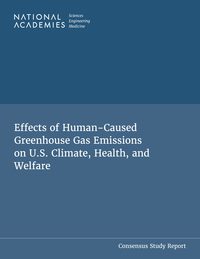Important Progress Toward a Climate-Ready Grid
New transmission is crucial. This is how FERC is starting to address the problem.
We urgently need more transmission to accommodate renewable energy, increased energy demand, and grid resilience to climate disasters. Yet the transmission approval process has been badly broken, often favoring small projects that plump up utility profits but do little to address longterm or regional transmission needs.
Last week, the government took steps to improve permitting for new transmission lines. These moves have been urgently needed. (Regrettably, someone else preempted the title, “What the FERC Is Happening With New Electric Transmission Rules?”) Transmission has become the Achilles Heel of our energy system. “Achilles tendon” would be an even better metaphor, evoking the key cord the ties the leg’s muscles and the feet together.
The most important move was taken by FERC — the Federal Energy Regulatory Commission in Order 1920. This regulation requires transmission operator sto engage in a 20 year planning process rather than waiting until transmission needs have become urgent. Planning has to include consideration of federal and state regulation (such as climate laws), and stakeholders such as utilities and state governments must be allowed to participate in the process. The plan has to include criteria for selecting high-priority projects.
Importantly transmission operators will need to set forth how to allocate costs among utilities, which is often a serious sticking point. Order 1920 requires consideration of indirect benefits of transmission to utilities (including some who don’t even use the line) in the form of reduced peak energy prices, greater grid resilience to extreme weather, and reduced grid congestion.
There are some other significant features of the rule. FERC encourages upgrades of existing transmission lines, which can reduce the immediate need for new lines. It also encourages the construction of larger, “right sized” lines as opposed to smaller system upgrades by utilities.
A dissenting FERC member attacked Order 1920 because he viewed it as giving too little role to the states. There is sure to be litigation over this and other aspects of the rule.
In related action, on May 8 the Biden Administration issued a preliminary list of national interest transmission corridors. This designation allows FERC to approve new lines without giving states power to prevent land acquisition by transmission builders. State approval can often be a roadblock, especially when lines must cross states that will use little if any of the power.
On May 14, FERC adopted new provisions for approval of these lines. In Order 1977 — the numbering of FERC orders seems completely random, in case you’re wondering — FERC made some important process changes. Although it tries to streamline the process in other ways, Order 1977 requires that transmission builders wait a year after they start the state permitting process until they file with FERC. Only then, does FERC have authority to go ahead on its own. FERC dropped a provision from the proposed regulation that would have allowed the permittee to get a head start on the FERC process by pre-filing before the year was up. Applicants must give FERC information about how the line would affect the environment (and environmental justice communities in particular). It also calls for early and active engagement with stakeholders.
These FERC rules will take to implement and more time before they result in getting quicker transmission projects up and running. In the meantime, we need to do our best to speed up approval of projects that are already in the works. Alternatives to new transmission also exist: expansion of utility-scale storage, greater use of distributed energy resources, greater energy conservation, and power system upgrades. Those will always be important but they are especially important to fill the gaps before new transmission is in place.







Reader Comments